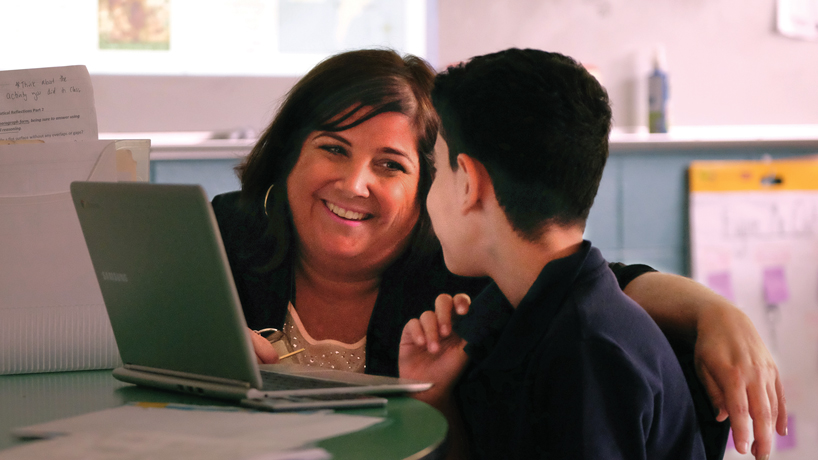
The COVID-19 pandemic has put some elementary and secondary students at a disadvantage continuing their studies because of unequal access to technology and broadband services. (Photo by August Jennewein)
As schools across the St. Louis region transitioned to remote learning last month amid the onset of the COVID-19 pandemic, students in the Rockwood Summit School District had opportunities to drive by and pick up Chromebooks to help them continue their academic work.
But not all districts have been able to distribute similar resources to their students, and even if they had, not every student would have been able to take advantage of them because of a lack of broadband internet access at home.
University of Missouri–St. Louis faculty members Shea Kerkhoff from the Department of Educator Preparation and Leadership and Ryan Krull from the Department of Communication and Media say the pandemic has highlighted the inequality that already existed in access to technology.
“There’s a digital divide in St. Louis, and it runs along the Delmar Divide,” said Kerkhoff, referring to the racial and socioeconomic disparities between the north and south sides of Delmar Boulevard, bisecting the city.
Krull was set to present on that very topic at a University of Missouri research summit highlighting the university’s role in improving broadband access in the state of Missouri. The summit was scheduled to take place in Columbia but was postponed in February because of inclement weather and again in March because of the pandemic.
Last year, Krull penned an article in the Riverfront Times about the difference in broadband access in north and south St. Louis. It cited data from the Census Bureau’s American Community Survey, gathered between 2013-2017 and released in 2018.
“If you take all the spots south of Delmar, I think about 80 percent of those households have broadband access,” Krull said. “North of Delmar, that number drops to about 48 percent. That’s a pretty big disparity.”
The gap extends into less affluent parts of St. Louis County.
The lack of access is a barrier for students to make use of online learning tools that might help them continue their academic progress, as Krull noted in another recent Riverfront Times story about how city students have managed the shift to elearning.
Unlike in rural communities where a lack of infrastructure can keep residents disconnected, Krull’s reporting has showed the problem for most people is a lack of economic resources.
“In St. Louis, even in the spots that have the lowest points of access, AT&T or Charter both have a presence there,” Krull said. “But you might not get away with paying less than $45 a month.”
“That access issue is actually an income issue,” Kerkhoff said. “It’s the issue of people being able to afford to adopt it.”
The wider use of smartphones as tools of communication has helped a few more people get connected, but that still can bring a steep monthly cost.
Krull said the St. Louis Public Library system is one entity that has been trying to address the problem, not only by providing access to computers and Wi-Fi at its 17 locations but also by offering mobile hotspots that patrons could check out and bring home. But those locations have been closed during the pandemic.
The University of Missouri System is trying to do its part to improve access into the future. Last August, it started a broadband initiative to encourage the statewide build-out of reliable high-speed internet infrastructure and increase the use of broadband-based applications. Lav Gupta, a professor of computer science at UMSL is a member of the UM System Broadband Leadership Team.
“What we’re trying to do is set up a platform and create an environment so that the penetration of broadband in Missouri, specifically in rural areas, but throughout all of Missouri increases,” Gupta said.
“The initiative is systemwide to help people in Missouri – including our students – to access the internet, whether the issue is an infrastructure issue or an affordability issue,” Kerkhoff said. “The UM broadband initiative is following the path that the electric co-ops pioneered in the last century to bring electricity across the state.
“Just like how electricity was not in every household – you could live your everyday life without electricity and it was seen as something for elite people or seen as a luxury, it then became a necessity for life.”
But those are longer-term goals. Students from low-income communities remain at a disadvantage during current circumstances.














